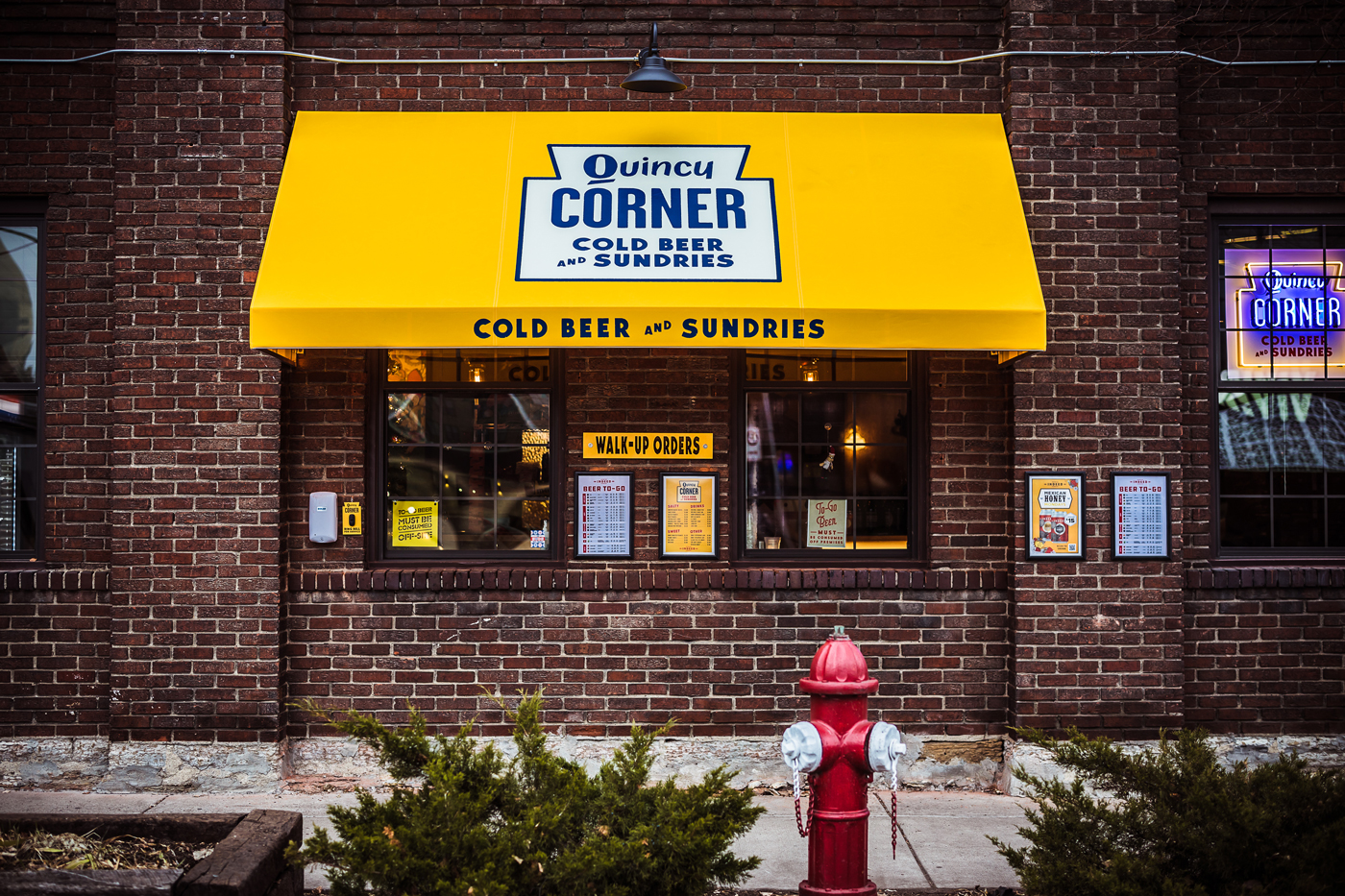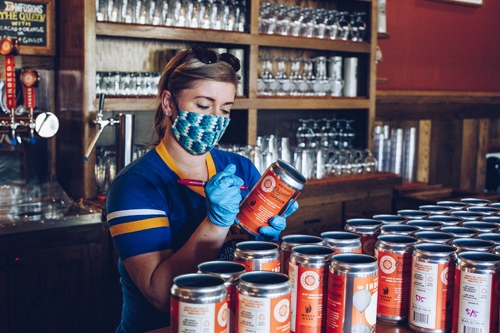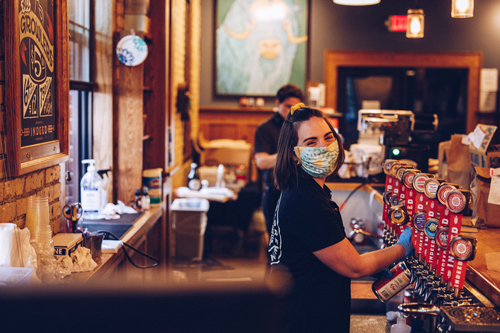 How Indeed Brewing Co. continues to grow beyond its Minneapolis roots
How Indeed Brewing Co. continues to grow beyond its Minneapolis roots
The plan was always to take it slow. When Tom Whisenand and Nathan Berndt wrote the business plan from a library book called “How to Write a Business Plan,” expansion was not on the short list of things to do. The plan was to diligently grow a brand that was not just rooted in innovation, but also in a culture built of good people, good beer and good experiences.
Eight-plus years down the road, Indeed Brewing, which launched in 2012 with a taproom opened to the public and a distribution model consisting of kegged beer to bars and restaurants, the brand continues to evolve. The location, which opened in the Logan Park neighborhood of Northeast Minneapolis, included Whisenand, Berndt, Rachel Anderson and Josh Bischoff, a former local brewer who they named head brewer.
Indeed kicked off its foray into the Twin Cities’ craft world with a diverse set of offerings, anchored by its flagship Day Tripper Pale Ale, and the likes of Flavorwave IPA, the award-winning Mexican Honey Light and its Wooden Soul series of wild, sour and barrel-aged beer.
Growth ensued with a $250,000 expansion in 2013 aimed at doubling its capacity to 6,400bbl per year, eventually increasing expansion out of state in 2014. In November 2018, Indeed rolled into Milwaukee with a new brewery and taproom in the city’s Walker’s Point neighborhood.
Today, it continues to create a whole environment around each brand—a strategy that not only involves the beer, but also the customers who have affixed themselves to the brand.
We sat down with COO Kelly Moritz to get a peek into the Indeed world of brewing and what’s in store for the craft world in 2021.
 What adjustments have you made to your business model surrounding the recent state of events?
What adjustments have you made to your business model surrounding the recent state of events?
It almost feels easiest to answer, “What adjustments didn’t we make?” The more nuanced answer, though, is that we have been able to double down on our strengths as a business to power through the unique challenges we face in this industry.
Two main things stand out when we reflect on our relative successes in the past year: taproom experience and self-distribution. Our taprooms have adapted to the new norms by providing a safe experience for guests and staff whether enjoying a pint on site or taking beer to go. The self-distribution arm of our business, which serves the Twin Cities metro area and represents about 70% of our sales, was positioned to provide continuous, custom-tailored service to more than 700 accounts. In both cases, we were able to respond quickly and nimbly to a changing landscape.
What kind of conversations are you having with your customers?
We’re making every effort to put ourselves in their shoes and provide solutions to problems. Our bar and restaurant partners are hurting, so we’re going the extra mile with them, and providing support and creativity wherever possible.
What role should a brand play in being a leader in a distressed market?
A brand like ours is actually quite versatile in that we are a small company built and run by real people who speak in a clearly defined voice and tone that is easily recognizable and trusted. We can use that voice to take a stand on an issue that’s important to us, or we can use that same voice in a different time and place to put a smile on someone’s face with a bit of witty copy and a well-shot photo. We recognize that we’re in a stronger position than some, so as a brand we remain open, supportive and willing to help where we can.
What advice can offer other brands in how to deal with the unthinkable like this?
Stay true to what got you where you are. If you don’t have a well-defined brand voice, now is the time to put that work in. If your company doesn’t have well-defined values to lean on in hard times, and you can feel that now more than ever, dig in and figure out what those are. If cracks started to show when things got crazy, use them to shine a light on problem areas and to define what you want the future to look like.
Give us a snapshot of today’s craft spirits market from your perspective.
The playing field is wide open. Nothing is siloed into a rigidly defined category anymore. Beer can be seltzer. Wine can be a cocktail. Spirits can be booze-free.
What’s likely to happen next?
I think companies that are willing to play in a few different sandboxes, intentionally and with respect to their brand and their uniqueness, will see new levels of success staying relevant to their core customers and developing new relationships with those who exist now in their white space.
 What trends are defining the space?
What trends are defining the space?
Fruit continues to dominate the craft beverage space, with the new addition of botanicals and teas really gaining in popularity. Creative booze-free offerings like hop water, CBD seltzer and non-alcoholic spirits are becoming so sophisticated, with such well-designed packaging.
On opposite ends of the spectrum, I see a lot of wellness-leaning trends sitting side by side on shelves with a new level of decadence in these over the top pastry stouts and heady, sweet milkshake styles; it feels like the angel and the devil are on your shoulder with not much standing out in between.
What’s your story from a brand perspective?
We try to keep our story simple and let it tell itself through the things we produce, whether that’s a can of beer, a night out at the taproom, a new hat. We have two homes, in Minneapolis and Milwaukee, and we are deeply rooted in both cities. In all the things we do, we aim to contribute to the culture of those places where we work and play, and to give back to the communities we live in.
Our owners founded the company with a light-hearted ethos that has been a through-line for the brand and still guides us today. We love what we do, and creating positive beer experiences is in our DNA. Artfulness has always been an important part of our brand story, from brewing philosophy to can design to what’s on our taproom walls. We’ve been able to build upon the founders’ vision of a playful, adventurous, whimsical, caring brand, while leaving room for the rest of our story to still be written.
Walk us through your branding strategy.
We try to create a whole environment around each brand, starting with the liquid, the person drinking the liquid, the experience they’re having with it, and then try to tell that story as quickly as possible through the visuals and copy surrounding each brand.
What’s the biggest issue today related to the marketing/sales side of the craft beer business today?
Since branding has become so important on the shelf, people have lost a sense of the people behind the brands. In a race to become the hippest, the most well-designed or funniest label, the branding becomes more of a graphic design project with no distinguishable personality behind it. Brands aren’t telling stories of their companies beyond the cover image.
What’s the secret to creating a branding story that consumers can buy into?
An authentic and consistent voice, whatever that means to that particular brand.
What’s the one thing every craft beer brand should do in the way of marketing?
Email. After years of social overload, a really well-crafted email feels like a personal letter from a friend.
What do you see as some of your biggest opportunities moving ahead?
To circle back to the strengths that have been getting us through this tough time, our taprooms and our self-distribution operations, along with our recent forays into some “beyond beer” drinks like our Boon Hard Kombucha and Lull CBD Seltzer, all stand out.
What’s the biggest item on your to-do list right now?
We plan to take our Milwaukee brewery from less than 300 BBLs in 2019 to 1,000 BBLs in 2022, so that.
Story by Michael J. Pallerino, editor of Craft Brand & Marketing magazine. Over the past 30-plus years, he has won numerous awards, including the “Jesse H. Neal Editorial Achievement Award,” recognized as the Pulitzer Prize for business-to-business magazines. He can be reached at mikep@ccr-mag.com.
